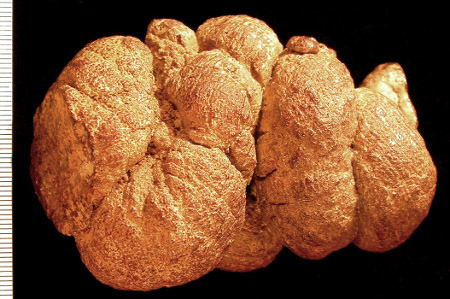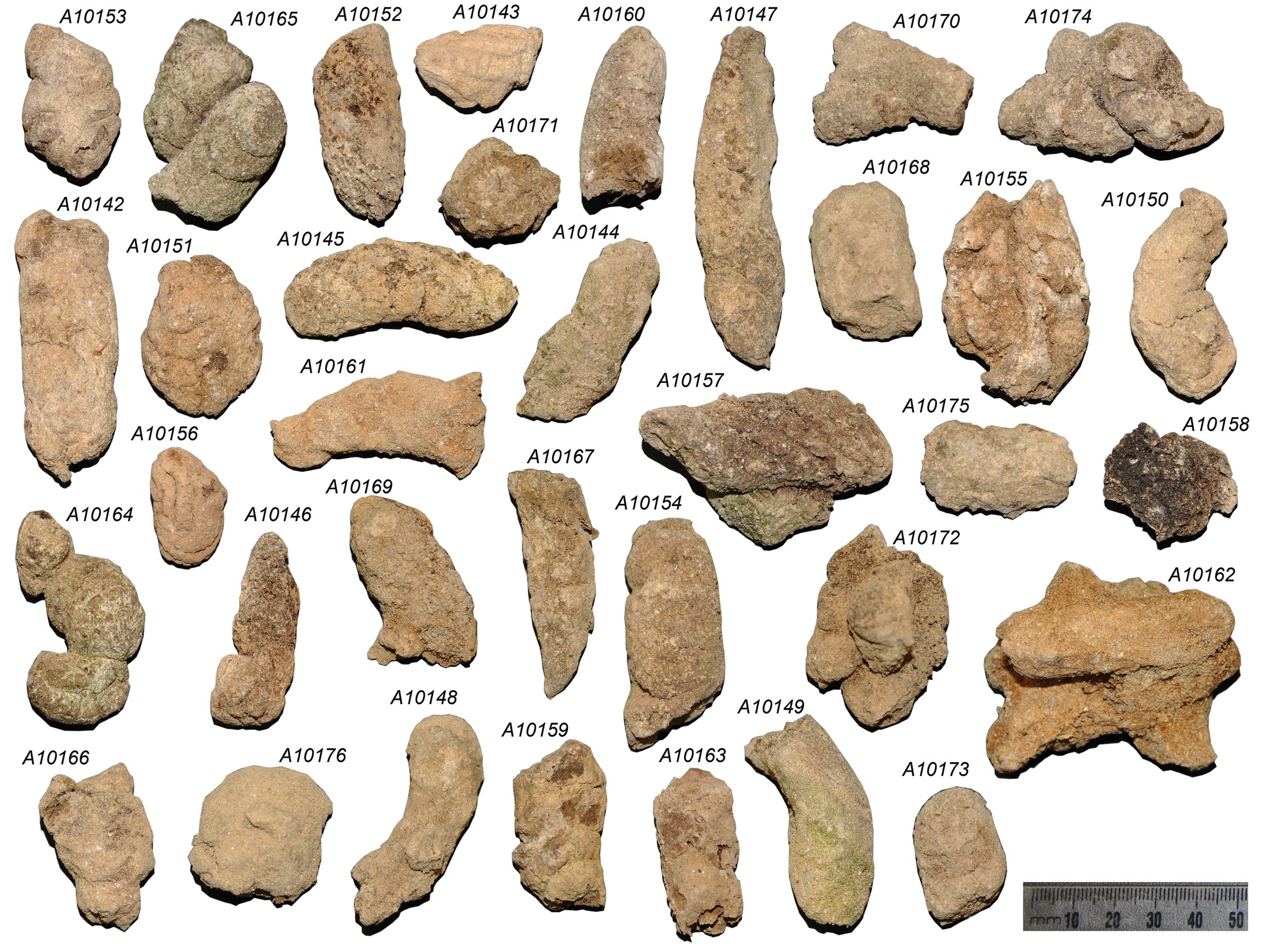Pseudo-poo! All that glitters isn’t fecal gold

Fossil feces are the stuff of legend. Not only do they have the “gee-whiz-gross” factor, but they also preserve evidence of diet, parasites, and paleoecology in long-dead animals. An paleontological urban legend holds that the technical term–“coprolite”–was coined by an academic rival of the 19th century paleontologist Edward Drinker Cope. Sadly, this is just a fabrication, but the story illustrates our fascination with one of the more scatological ends of science.
This fascination extends into the world of fossil collecting as well as the commercial fossil trade–after all, what collector wouldn’t want a piece of dino dung? Purported coprolites are a fixture at rock shops and even some museum gift stores. Perhaps the most commonly available “coprolites” are from the Miocene (~6 million year old) aged Wilkes Formation of Washington State, USA. These specimens (such as the one at the head of this post) certainly look the part–squiggly, lumpy, and generally fecal in form. The Wilkes Formation preserves ancient wetlands, swamps, and plains, with abundant fossil plants but no vertebrate bones to speak of. Thus, the “coprolites” are blamed on ancient mammals, crocodilians, turtles, or even (erroneously, given the geological age) dinosaurs.
But, these alleged coprolites are probably too good to be true. Their mineral composition (mostly siderite, an iron-rich carbonate) as well as a complete lack of digested food remnants (such as bone bits, fish scales, or plant pieces) suggests to most geologists and paleontologists that something else is going on here. Essentially, it is now thought that the “coprolites” from the Wilkes Formation are simply mud squirted out under the pressure of burial or perhaps as decaying organic matter produced methane (Spencer 1993; Mustoe 2001). An alternative viewpoint is that the specimens are cololites–natural casts of the inside of an animal’s colon, with the skeleton itself dissolved away by soil chemistry (Seilacher et al. 2001). Although this explanation is intriguing, I find it unlikely given the very un-intestinal anatomy of many examples, including one recently publicized example of exceptional length (it’s on the auction block, so I won’t link to it directly). The same rocks produce many random “blobs” of similar composition, too; these just aren’t picked up and sold as coprolites! Finally, at least some of the specimens are found in nearly vertical orientations relative to the surrounding rock (Mustoe 2001), which would be highly unusual relative to typical preservation of vertebrate fossils.
So, how do you know if a poo-shaped rock is a genuine fossil or just pseudo-poo? The discovery of digested bits seems to be the best guide.

References
Mustoe, G. E. 2001. Enigmatic origin of ferruginous “coprolites”: Evidence from the Miocene Wilkes Formation, southwestern Washington. Geological Society of America Bulletin 113:673–681. [paywall]
Seilacher, A., C. Marshall, H. C. W. Skinner, and T. Tsuihiji. 2001. A fresh look at sideritic “coprolites.” Paleobiology 27:7–13. [paywall]
Spencer, P. K. 1993. The “coprolites” that aren’t: The straight poop on specimens from the Miocene of southwestern Washington State. Ichnos 2:231–236. [paywall]
Yancey, T. E., G. E. Mustoe, E. B. Leopold, and M. T. Heizler. 2013. Mudflow disturbance in latest Miocene forests in Lewis County, Washington. PALAIOS 28:343–358. [paywall]
[Note to people working on “coprolites” of the Wilkes Formation in the future: make some of your stuff open access!]
